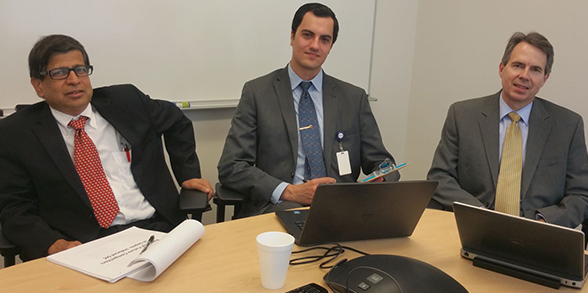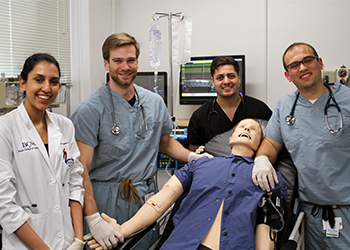New center offers solutions to help move Baylor discoveries from bench to bedside
This feature is part of an ongoing series that focuses on VIICTR.org, highlighting clinical and translational research at Baylor College of Medicine.

When scientists receive research training, in either clinical or basic sciences, it doesn’t always prepare them for the process involved in taking their discoveries from the lab and develop it into a product that is commercially viable.
To assist the innovative investigators and fledgling entrepreneurs at Baylor, the Innovative Development Center was formed by the College to aid in the process.
IDC Executive Director Andrew Wooten, M.S., M.T.M, recently discussed how he became interested in helping move scientific discoveries from bench to bedside, as well as the services the center provides.
Q: How did you become interested in this area of work and how did you get involved with the Baylor Innovation Center?
A: While I was completing a Master of Science degree in biotechnology, my major professor created a new company. As I observed the processes involved, I soon became interested in the translation and commercialization of scientific discoveries. Since then, all phases of my career have focused on the interface between university research and the business world.
I have worked in industry at large companies such as Applied Biosystems and Thermo Fisher Scientific. I have helped to establish successful university startup companies such as Reproductive Biology Associates and AviGenics (now Synageva Biopharma) and I have worked in academic technology commercialization at the University of Chicago and at Arizona State University before coming to Baylor. So, I have experienced the biomedical ecosystem from multiple angles, and I draw on all of these experiences in my new role as the executive director of the Baylor IDC.
Q: How was the IDC established, and where is it located?
A: The IDC would not have been possible without the support of the Baylor Research Business Development and Strategy Group. The Dan L. Duncan Institute for Clinical and Translational Research provided the infrastructure needed initially to build the IDC activities from the ground up.
The position of Executive Director of the IDC was loosely defined, giving me the latitude to take the IDC in the direction most needed for the institution.
Early on, I identified a gap in the resources, expertise and infrastructure required for the preclinical stage of product development in the research enterprise both at Baylor and in the region.
As I searched for ways to address that gap, I identified an opportunity with the U.S. Economic Development Administration to fund a program that would allow us to strengthen our capabilities in that area. We submitted a successful application that has helped us to build a new facility dedicated to innovation development and commercialization.
The facility is housed on the 5th floor of the Neurosensory Center building located at the corner of John Freeman Boulevard and Fannin Street. The space is divided between laboratories that are designed for molecular biology research and administrative offices.
Q: What is the purpose of the Innovation Development Center, and what benefits does it provide to individual faculty members and the Baylor community at large?

A: We provide the kinds of resources and expertise needed to evaluate whether scientific discoveries have commercial merit. Historically, one of the challenges is that, in order to be successful as entrepreneurs, investigators have to spend time away from the pursuit of science to develop the requisite skills.
We organize a development team of internal and external experts who can help propel the commercialization process forward on behalf of the investigator. We rely on in-house professionals from the center, Institute for Clinical and Translational Research, Baylor Licensing Group, and BCM Technology who provide expertise to pursue commercial grant opportunities, shepherd products through preclinical development phases, conduct clinical trials, attend to regulatory issues, protect and transfer intellectual property, and establish new ventures.
We also complement our Baylor staff with outside advisors who have first-hand knowledge of a particular business or market.
The first step in the IDC process is to screen projects to determine which have the greatest probability of success and then select the most promising for further development.
Through the Alkek Award for Pilot Projects in Experimental Therapeutics, we work with the ICTR to invest in the top projects at Baylor. We then develop commercial plans for the award winners. These commercial plans can then be used to pursue commercial grant opportunities with the Small Business Innovation Research/ Small Business Technology Transfer program, the Cancer Prevention and Research Institute of Texas program and others, which require that a professionally executed commercialization plan be submitted with funding applications.
Certain commercial grant opportunities are available only to independent companies. To be able to take advantage of these opportunities, we need to form research and development companies. The IDC in effect serves as a hub and a home for these development companies.
Read more about the development center.
Additional Resources
What inspires biomedical research?



